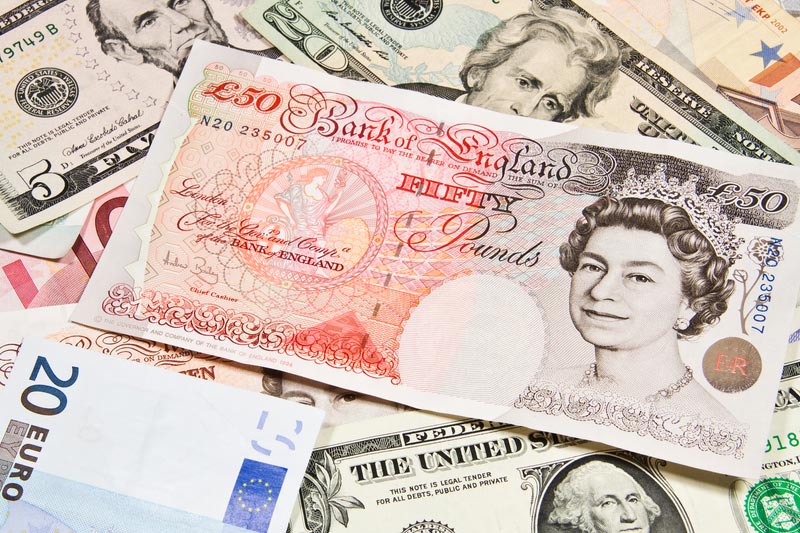
ExchangeRates.org.uk – Risk appetite has dipped sharply again on Monday with fear dominating ahead of the scheduled April 2nd imposition of US tariffs on global trading partners and markets braced for high volatility.Hopes that President Trump would take a less aggressive stance have been hampered by weekend reports in the Wall Street Journal of a more aggressive tariffs.
After US indices posted significant losses on Friday, global markets moved sharply lower on Monday.
According to Danske Bank (CSE:DANSKE); “it is no surprise that risk-takers should be worried at a time when US trade politics are set to be turned upside down, with average trade-weighted tariffs potentially increasing towards 18% from a mere 3% going into the year.”
MUFG added; “This week’s US “reciprocal tariffs” plan could further increase the risk of a more disruptive global trade war.”
The Pound tends to be notably vulnerable when risk appetite deteriorates, but it has held steady and there are still some hopes that the UK will be able to secure concessions.
The Pound to Dollar (GBP/USD) exchange rate held just below the 1.2950 level.
UoB expects a 1.2850-1.3050 GBP/USD trading range in the short term with very choppy trading.
The Pound to Euro (GBP/EUR) exchange rate edged higher to around 1.1965.
SocGen expects strong GBP/EUR support on dips to 1.1930 with the potential for medium-term gains.
ING still expects that the dollar will benefit; “We could start seeing some support for the greenback today as defensive positions are built into Wednesday’s tariff event.”
Tariffs will certainly have an impact on the global economy, but there will also be domestic implications.
ING commented; “What the FX market is indicating through spot, options, and positioning is a greater focus on the domestic implications for the US rather than on the countries being targeted with tariffs.”
The bank added; “We see some upside potential for the dollar this week as markets may have turned a bit too sanguine on the tariff view, and Trump has suggested over the weekend that he will impose tariffs on all countries.”
Commonwealth Bank of Australia added; “We judge that Trump’s tariff regime will be more disruptive to the global economy than markets are currently pricing.”
Danske Bank sees the potential for a u-turn; “this is adding to the risk a recession, which we ultimately do not believe Trumps is willing to do.
Therefore, that is why the destructive politics are not a no-brainer for us when considering risky assets.”
There will also be important US data this week, culminating in the employment report on Friday.
MUFG notes the potential impact of declining US yields; “The ongoing drop in US yields remains a headwind for the US dollar against other major currencies amidst more risk-off trading conditions as global growth fears build.”
Evidence of UK business confidence will continue to be watched very closely.
Domestically, the Lloyds (LON:LLOY) Bank business barometer held at a 6-month high of 49 for April.
There was, however, a slide in manufacturing confidence amid fears over the global tariff environment.
Hann-Ju Ho, senior economist, Lloyds Commercial Banking, said: “Business confidence remained steady this month, suggesting that UK companies may have been waiting to see the impact of government decisions at home and globally.
This content was originally published on ExchangeRates.org.uk